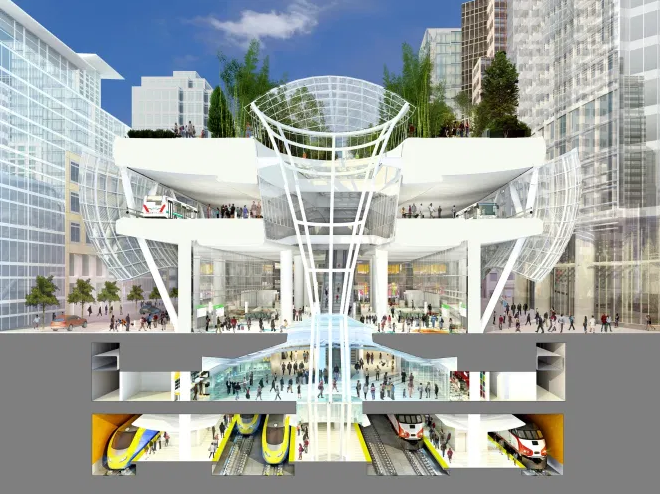Note: GJEL Accident Attorneys regularly sponsors coverage on Streetsblog San Francisco and Streetsblog California. Unless noted in the story, GJEL Accident Attorneys is not consulted for the content or editorial direction of the sponsored content.
The Democrats held onto the House in November's election. Kamala Harris will have the tie-breaking vote in an evenly split Senate. And "Amtrak Joe" Biden will be president before the end of next week.
"We have this opportunity over the next two years," said San Francisco Supervisor and incoming chair of the County Transportation Authority Rafael Mandelman in an interview with Streetsblog. "It could be the best opportunity we have... towards having the funds that we need for the downtown extension."
Mandelman wants the city to push hard to submit an application to Washington for funding for the 1.3-mile tunnel that will allow Caltrain and high-speed rail to access the basement train station of the Transbay Transit Center. And it's imperative, he said, to do this before the next election, which could shift Congress back into the hands of the Republicans.
It also has to be competitive with other projects around the nation. "Our big charge is how to reduce the cost by phasing this large project," SF County Transportation Authority head Tilly Chang told Streetsblog. "It has super high benefits, but it’s also quite expensive, so we want to do whatever we can to get an initial operating segment--to be the most competitive.'"
That means the city might start by getting utility relocation "shovel ready" sooner, putting the underground pedestrian connection to BART on hold, and aiming to open up only a few tracks and platforms to allow Caltrain service to begin into Transbay while work continues.
So far, said Chang, some 25 percent of the estimated $4 billion for the project is identified, including funds from Regional Measure 3, possibly Caltrain's RR, and $575 million from the High-Speed Rail Program, which will share the tracks and station. She's confident that via other regional funds and state monies they can reach the 30 percent threshold needed to apply for federal matching funds, something that should be possible by August of 2023.
Full construction is expected to take seven years. The completed station will ultimately handle twelve trains per hour, with the opening date scheduled for sometime after 2032.
The Transbay Terminal project had been divided into "three interconnected elements," as explained on the construction authority's website. The bus terminal, shopping plazas, and rooftop deck garden of Transbay were finished in 2018, along with the gigantic underground box for a train station. Redevelopment of the surrounding neighborhood was well underway when the pandemic stifled economic growth worldwide.
Transit advocates have long bemoaned the fact that the Transit Center was completed before the rail connection was built, let alone designed. While the Center handled plenty of AC Transit and other buses prior to the pandemic slowdown, the lack of trains in San Francisco's "Grand Central of the West" remains an embarrassment for the city. "We have asked Tilly Chang to invite Pete Buttigieg to SF to see what we’ve got going on here," wrote advocate Thea Selby, one of the founders of the San Francisco Transit Riders. Advocates hope the sight of the station and existing work (see image below) will encourage the incoming Secretary of Transportation to push through funding for its completion.
Mandelman added that a balance needs to be struck between emergency funding for operations to get through the remainder of the pandemic and assuring that important, long-term projects move forward. He said both have to be done.
"It’s looking increasingly likely there will be funding for high-speed rail and regional transit projects if we have projects that are ready to spend it," wrote Livable City's Tom Radulovich in an email about the connection. "The Downtown Extension is both a high-speed rail project and a critical link in the regional network. We should get it shovel-ready ASAP."






